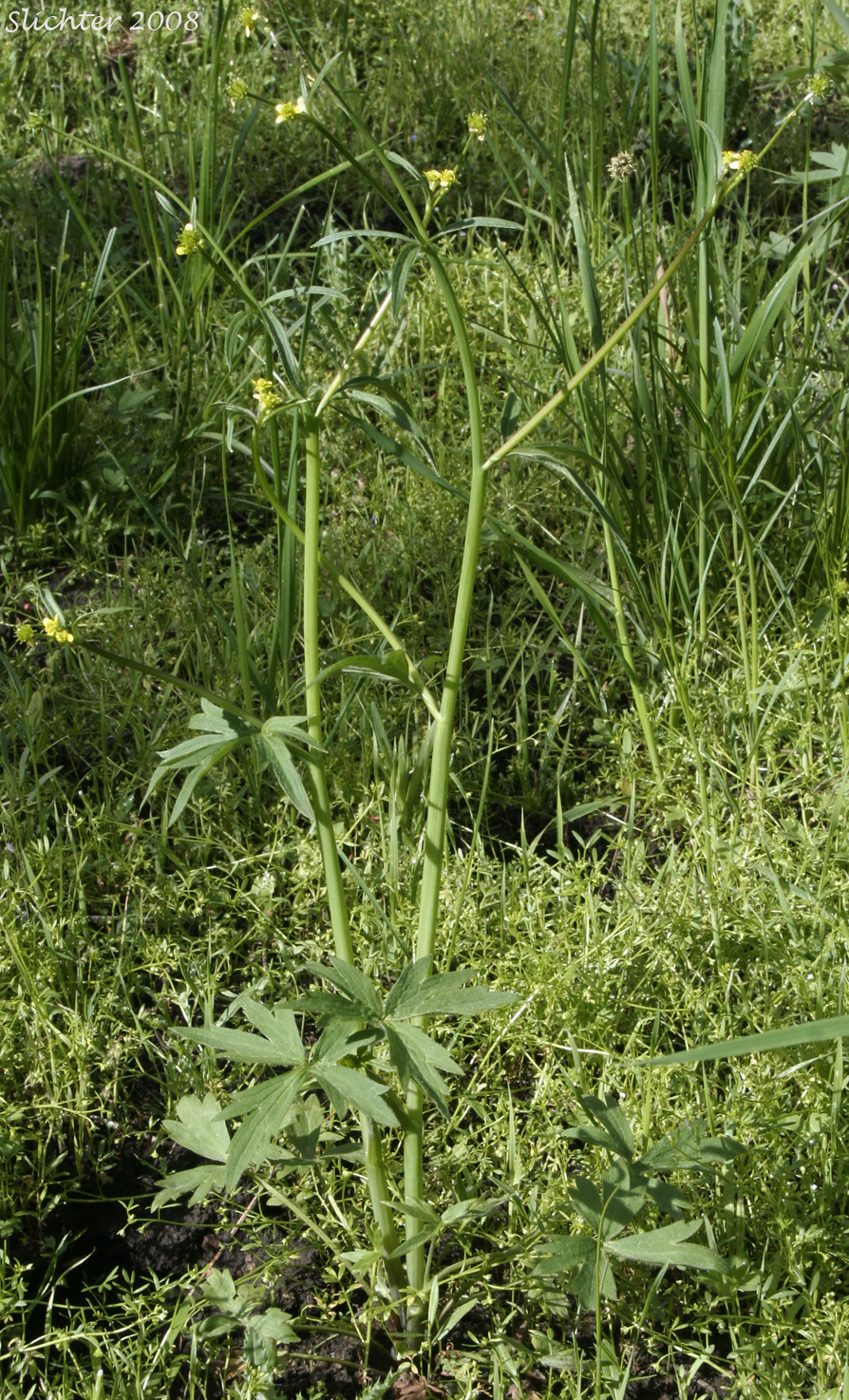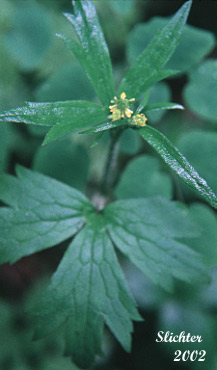
 Characteristics:
Characteristics:
Little buttercup as its name implies has very small flowers. It is a perennial with usually one erect stem arising from 20-60 cm high from coarse fibrous roots. The stems are hollow and the herbage is variable, depending on the variety as listed below.
The basal leaves have petioles up to 20 cm long and heart-shaped to triangular blades, the blades deeply three-lobed and from 3-8 cm long. The lateral segments are again lobed over almost half their length with a few deep teeth. The central lobe is shallowly lobed three times with shallower teeth. Several leaves alternate along the stems. These become reduce in size upwards on the stem until they become bracts with 3 long, linear segments.
The 5 sepals are spreading to reflexed, measuring 1.5-3 mm long and quickly deciduous. The 5 yellow petals measure 2-3 mm long. Ten to fifteen stamens are present.
Variety parviflorus: Plants sparsely to densely stiff-haired. The achenes are covered with hairs too.
Variety uncinatus: Plants glabrous to sparsely stiff-haired. The achenes are glabrous too.
Little buttercup may be found in moist soils in shady forests.
Little buttercup is found from Alaska south to California and east to Montana where it is found south through the Rocky Mts. to New Mexico.